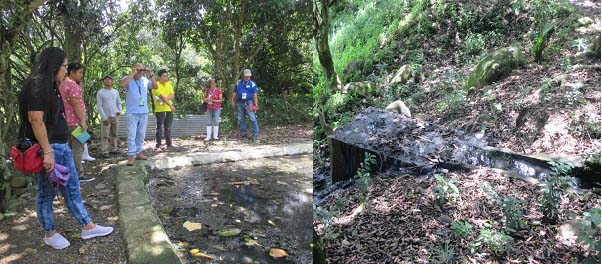
Davao City – A watershed advocate group raised the concern that Davao River is more at risk to pollution with the waste water treatment facility of a peking duck plant within the watershed not “functioning properly”.
The Watershed Multipartite Monitoring Team recommended the company to do “corrective measures in their wastewater facility and secure an updated wastewater discharge permit”, as stated in their report submitted to the Watershed Management Council.
This came as a result of an ocular inspection conducted by the team at Maharlika Agro-Marine Ventures Corporation at Sitio Lower Tamugan, Marilog District last May 12, 2017.
“The polishing pond for waste water was cloudy, dark in color, had big debris, and foul odor. There was also no fish in the water which was the indicator that the water is safe for discharge to Davao river,” explained Forester Christopher Asibal of City Environment and Natural Resources Office (CENRO).
City Health Office (CHO) Representative Curtis Lazarraga also relayed to Maharlika’s staff that the Davao river is now being used as source of drinking water for the communities of the second district through HelpMate Inc.
“If waste water is disposed as is, its seepage will eventually reach and contaminate the 20 feet wells drilled as water source in the second district,” Lazarraga said.
The team called for the plant’s management to prioritize and ensure quality maintenance of the waste water facility.
“We went here in April and it was still okay, which means if you do not regularly maintain the facility, it’s very fast for the biodegradable matter to overload and decomposition process will not take place properly,” Forester Asibal explained.
Davao City Water District representative Edmarson Sola also expressed his concern on the findings in light of Maharlika’s declaration that there has been no production recently since the ducks have not yet reached the minimum weight required for the market. Hence, there has been a reduction in manpower.
“Even without operation, the odor was bad, how much more if the plant is in full operations?” Sola said. The plant went into full operations in 2014 despite being in the watershed area.
IDIS Acting Director Chinkie Pelino-Golle clarified that the plant’s status in Tamugan watershed is “existing non-conforming” meaning the company was allowed to operate because the infrastructures were already existing. “But they committed to ensure that their waste water will be treated before it reaches the river,” she said.
Lazarraga reiterated the importance to protect Davao river, which is the management’s responsibility and the team’s role, otherwise he said, “we are all guilty to the people of Davao city.”
The team has been tasked to monitor operations and activities within watershed areas to ensure Davao city’s water quality by virtue of the City Ordinance on the Watershed Code. The Watershed Multipartite Monitoring Team is composed of different agencies including CENRO, CHO, City Planning and Development Office, City Administrator’s Office, and Davao City Water District.
The Interface Development Interventions Inc. (IDIS) also participated in WMMT’s monitoring activities, given the organization’s advocacy for healthy watersheds and initiatives that led to passage of the City’s Watershed Code.






